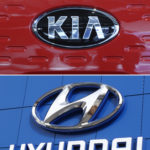American consumers assume they have the right to sue a company that has sold them a faulty product. In the upside-down world of bankruptcy — including the one General Motors is going through — those rights are not a given.
What kind of leeway does a bankruptcy judge have over product liability claims? And what will happen with the ones filed against GM?
Here are some questions and answers about how bankruptcy courts handle product liability.
Q: What’s happening with claims against GM?
A: “New GM” — the new incarnation of the company, which will buy the existing GM’s most valuable assets — has agreed to assume responsibility for future claims involving vehicles made by the old company.
Pending claims — those that were filed before June 1 — will have to try to recover money from the “Old GM,” a collection of mostly unprofitable assets left over after the sale. Those seeking claims against Old GM would likely get nothing.
GM got the court’s permission to resolve claims in this way when U.S. Bankruptcy Judge Robert Gerber approved the sale of its key assets on Sunday. The sale motion outlined how claims would be handled.
Q: What will happen with future claims related to cars sold later on, by the “New GM,” after the company emerges from bankruptcy?
A: Those will be handled the way product liability claims normally would outside of Chapter 11 bankruptcy. In other words, if customers have problems with cars they purchase from the new GM in the future, they will be free to sue the company.
Q: Could GM have gotten permission from the bankruptcy court to erase all accident claims related to cars sold by the old GM?
A: It could have. Federal bankruptcy law allows a company to enter court protection and sell assets free and clear of any existing claims and certain future claims against the company, said John Penn of the law firm Haynes & Boone.
The rationale behind the bankruptcy code that allows this, Penn said, is that “the fewer burdens the new company has, the more likely it is to succeed in the future.” So GM’s bankruptcy filing gave it a legal argument to get rid of product claims, even those that were made because of some defect in its products.
However, it is important to note that the law is not clear-cut in this area: Lawyers say courts around the country have been split on the issue of product liability in bankruptcy, differing over which responsibilities are inescapable under the court’s protection.
The government’s involvement and high public interest in GM’s case make it an even touchier subject.
Q: Is this what experts had expected to happen with claims against GM?
A: Those watching the case had expected GM to follow Chrysler’s lead and erase any existing and future claims from accidents involving cars bought from “Old GM.” But that has not happened, largely because of public pressure.
A couple of weeks ago, as GM was trying to secure support for its plan to sell its most valuable assets to a new company, it announced it would bear responsibility for product liability claims filed after June 1. It had faced strong opposition from state officials and consumer advocates, who said it was unfair for the automaker to abandon the claims.
In some way, GM’s decision to allow future claims let the court off the hook from deciding a potentially thorny issue.
Q: Is the resolution of the claims issue set in stone?
A: Not necessarily. A group of plaintiffs filed an appeal in U.S. District Court in the Southern District of New York on Monday. They hope to force GM to also take responsibility for existing claims.
Q: Has GM’s situation with regard to liability claims happened before?
A: GM is basically on new ground here, said Carl Tobias, the Williams Professor at the University of Richmond law school.
“This is a pretty tricky area — the intersection of product liability and bankruptcy,” Tobias said.
While other bankruptcy judges have told companies in bankruptcy to set aside money for future claims — sometimes in the form of insurance policies — this has not been applied consistently.
Norman Silber, a professor of consumer law at Hofstra University, said there are two approaches to determining fault when it comes to consumer liability claims.
“The courts are divided, and academic scholars are divided, about whether they should care more about what the consumer could reasonably expect or what the company should reasonably do,” said Silber, who is also a member of the Consumers Union board.
Q: What is at stake in GM’s case?
A: Silber cites GM regulatory filings that show product liability payments of $1.1 billion in 2007 and $960 million in 2008.
“We’re talking about a lot of damages that GM was compelled to pay,” Silber said. “That means the courts either decided GM actually bore the responsibility or else GM settled and decided it was worth settling those cases.”
The fact that those amounts are the actual payments means the total value of claims is likely much higher — the dollar figures probably came down in court decisions or when the company settled with plaintiffs. And there are potentially more claims that never got settled or paid.
Q: Do people worry that product safety rules could be in danger?
A: Yes, some people are concerned.
“If it becomes apparent that we can avoid — or a company can avoid — major product liability claims and you give bankruptcy courts the power to simply forget about product injuries that occur subsequent to new companies taking over, this has the potential to be quite corrosive of basic consumer protection law,” Silber said.
Sean Kane, president of Safety Research & Strategies of Rehoboth, Mass., said it is “unconscionable” to cut off old or existing claims and assign them to a less valuable entity in bankruptcy.
“It’s unfortunate that those filed before June 1 are kicked to the curb,” Kane said. “Consumer rights shouldn’t be dependent on some arbitrary date on the calendar, and that’s ultimately what happened.”
Was this article valuable?
Here are more articles you may enjoy.

 Allstate Insurers Sue Hyundai, Kia to Pay for Claims From Defective Cars
Allstate Insurers Sue Hyundai, Kia to Pay for Claims From Defective Cars  Verisk: A Shift to More EVs on The Road Could Have Far-Reaching Impacts
Verisk: A Shift to More EVs on The Road Could Have Far-Reaching Impacts  Changing the Focus of Claims, Data When Talking About Nuclear Verdicts
Changing the Focus of Claims, Data When Talking About Nuclear Verdicts  Swiss Re: Mitigating Flood Risk 10x More Cost Effective Than Rebuilding
Swiss Re: Mitigating Flood Risk 10x More Cost Effective Than Rebuilding 